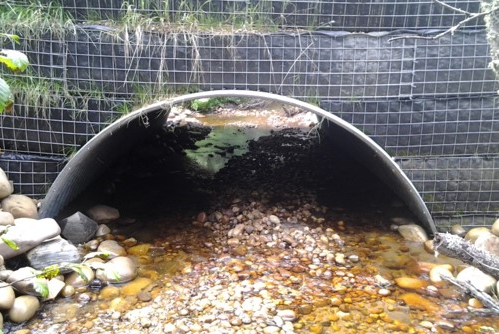Thesis Title: Offsetting approved harmful anthropogenic impacts in the 21st century – Insights into global offsetting practices, habitat banking as an alternative offsetting mechanism and application of habitat enhancement in northern boreal lake systems.
Author: Sebastian Theis
Abstract
Land-use change via human development is a major driver of biodiversity and habitat area loss and ecosystem function impairment. To reduce these impacts, billions of dollars are spent on environmental offsets, aimed to compensate for authorized negative impacts. Studies evaluating offset project effectiveness and individual mechanisms, remain rare.
Chapter 2 aimed to address the persistent questions of whether high project compliance is synonymous with high functional success as well as how to address residual or chronic impacts in aquatic ecosystems which can occur after offset establishment, for example because of the ephemeral timescale of some projects through a systematic review process and meta-analysis. While compliance and function were related to each other, a high compliance score did not guarantee a higher degree of function. However, function did improve with larger projects, specifically when projects targeted productivity or specific habitat features, and when multiple complementary management targets were in place. Altogether these relationships highlight specific ecological processes that may help improve offsetting outcomes for the conservation of habitat and biodiversity. The meta-analysis for offsetting residual or chronic impacts yielded three main approaches; habitat creation; restoration and enhancement and biological manipulation. Habitat creation projects, mainly targeting salmonids, with a high pooled effect size (0.8) and biomass increase (x1.4) needs to be explored for other species had a pooled effect size. Habitat restoration projects targeted a wide range of species and communities with a pooled effect size of 0.66, and intermediate biomass increases (>1x). Biological manipulation had the lowest effect size (0.51) with effort outcomes being highly variable.
Conservation and mitigation banks are widely used alternative mechanisms to traditional offsetting to compensate for unavoidable negative environmental impacts from development. In Chapter 3 we utilized publicly available banking data from for the United States to test whether area ratio requirements were met as well as how well ecological equivalency was achieved and to model current and future bank reserves through a predictive modeling framework. We conclude that most bank transactions using Preservation, Enhancement, and Re-establishment targeting wetlands, species, or multiple Mitigation-Targets met No Net Loss requirements on a ratio base. Wetland transactions, making up most of all assessed transactions (n = 10628), still missed matching appropriate impact to offset types in 25% of all cases, mainly due to Preservation not leading to any additional habitat area gain. While the Preservation of wetlands and the Rehabilitation of streams can provide a multitude of benefits, both practices need to be revised on an ecological level to bridge the gap between Not Net Loss based on credit and area yield ratios and ecological equivalence. Future predictions indicate a decrease in available reserves for banks targeting wetlands or multiple ecosystems, with potential bottlenecks relating to large reserves being limited to the Southeast and release schedules not catching up to the current and anticipated demand. Banks targeting species or streams are predicted to meet future demand, with species banks (conservation banks) following a different legislative and operational approach based on the listing of endangered species. Most current reserves for all four bank types are restricted to very few service areas with around one-third of all bank areas still awaiting release, limiting their availability on a broader scale.
Chapter 4 focussed on the introduction of coarse woody habitat in a northern boreal lake and responses of aquatic fish, invertebrate and macrophyte communities through a Bayesian modeling approach and the use of changes in beta diversity components over time. Catch data was collected over 2 years and posterior model predictions showed an increase in habitat use of the enhanced areas by resident fish (spottail shiner – Notropis hudsonius; northern pike – Esox lucius; white sucker – Catostomus commersonii; brook stickleback – Culaea inconstans), while no probable effect on overall fish health, measured in Relative Weight, was linked to the enhancements. Enhancement structures featured increased macrophyte and invertebrate richness and biomass compared to reference sites and pre-treatment assessments over the course of three years. Enhanced sites also retained improved richness (macrophytes), diversity (macroinvertebrates) and biomass (both), despite structural integrity loss of enhancements as early as 1 week post construction.

